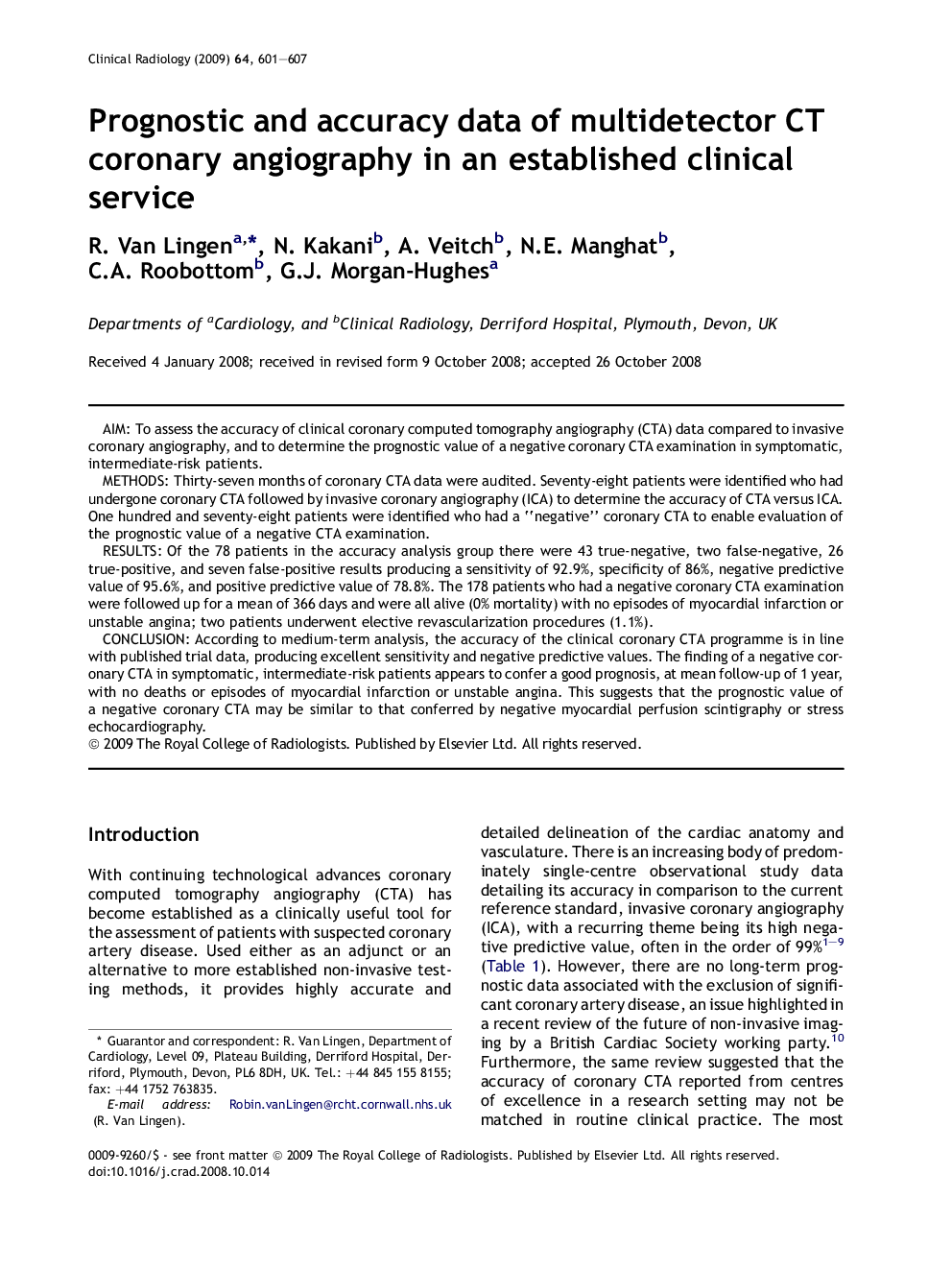| Article ID | Journal | Published Year | Pages | File Type |
|---|---|---|---|---|
| 3982985 | Clinical Radiology | 2009 | 7 Pages |
AimTo assess the accuracy of clinical coronary computed tomography angiography (CTA) data compared to invasive coronary angiography, and to determine the prognostic value of a negative coronary CTA examination in symptomatic, intermediate-risk patients.MethodsThirty-seven months of coronary CTA data were audited. Seventy-eight patients were identified who had undergone coronary CTA followed by invasive coronary angiography (ICA) to determine the accuracy of CTA versus ICA. One hundred and seventy-eight patients were identified who had a “negative” coronary CTA to enable evaluation of the prognostic value of a negative CTA examination.ResultsOf the 78 patients in the accuracy analysis group there were 43 true-negative, two false-negative, 26 true-positive, and seven false-positive results producing a sensitivity of 92.9%, specificity of 86%, negative predictive value of 95.6%, and positive predictive value of 78.8%. The 178 patients who had a negative coronary CTA examination were followed up for a mean of 366 days and were all alive (0% mortality) with no episodes of myocardial infarction or unstable angina; two patients underwent elective revascularization procedures (1.1%).ConclusionAccording to medium-term analysis, the accuracy of the clinical coronary CTA programme is in line with published trial data, producing excellent sensitivity and negative predictive values. The finding of a negative coronary CTA in symptomatic, intermediate-risk patients appears to confer a good prognosis, at mean follow-up of 1 year, with no deaths or episodes of myocardial infarction or unstable angina. This suggests that the prognostic value of a negative coronary CTA may be similar to that conferred by negative myocardial perfusion scintigraphy or stress echocardiography.
